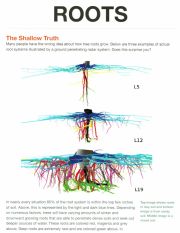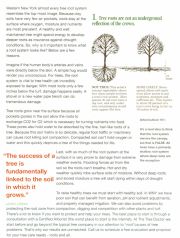Nutrition and Fertilization
Tree Nutrient Requirements:
Trees must extract 13 nutrients from the soil in order to survive.
These are the thirteen elements that every tree needs. It must have all of them. There are no substitutes. A tree deficient in any one element will not be healthy and will die well before its time.
Tree Docotor Fertilizing:
- Complete fertilizer – all 13 needed soil elements
- Deep-root injection – aerates soil thus providing superior access to oxygen for roots; also deposits fertilizer below turfgrass roots so that tree gets all of it
- Organic – attracts micro-organisms, improves soil as well
- Suspension – not readily soluble in water – will not leach into ground water – will not wash away
- Variable & slow release – makes nutrients available on a continuous basis for 12 months
- Low salt – will not “burn” roots
- Usually applied in early spring or early fall
- Mixed at our shop to provide optimum combination of elements for season, plant species and plant needs
Benefits of Fertilizing
- Alleviate compact soil
- Increase tree tolerance to drought
- Enhance plant resistance to insect and disease attacks
- Reduce wind and storm damage (by thickening cell walls)
- Produce more dense leaf canopy
What are Injections?
There are two kinds of injections; soil injections and trunk injections.
Soil Injection: Soil injections use hydraulic pressure to inject low risk pesticides into the ground. These pesticides are then absorbed by tree roots and dispersed throughout the tree canopy through its vascular system. The treatment is slow to become effective so soil injections should be done in the early spring to control for mid and late season pests. Treatments should be done in the fall to control for spring pests of the following season.
Trunk Injection: Trunk injections come in a variety of forms but all involve injecting a pesticide or nutrient directly under the bark and into the cambium of the tree where it is then absorbed by the tree’s vascular system and spread throughout the canopy. Some injections involve drilling small holes into the trunk and then placing pressurized capsules into the holes. Other injections involve using a tool similar to an IV. The IV needles are inserted into plugs that are drilled into the tree and the "medicine" is pushed into the living portion of the tree under the bark.

